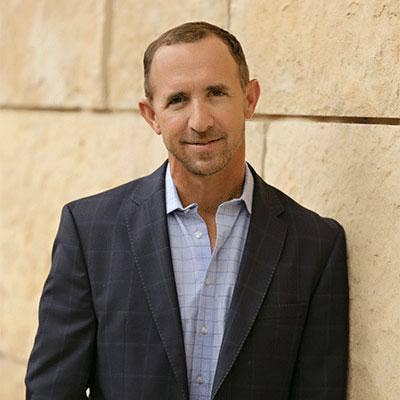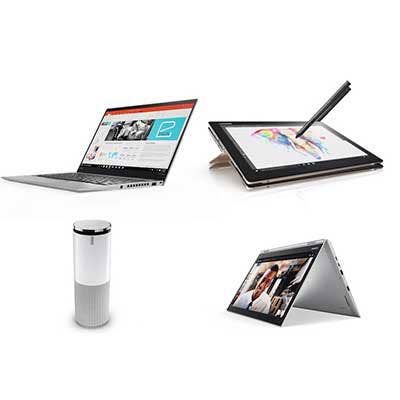CRN Exclusive: Lenovo Channel Chief Kinlaw On New Data Center Tier Structure And The PC Battle With Dell, HP Inc.

A Horse In The Race
Sammy Kinlaw wants Lenovo's channel partners to closely assess which vendors they're working with and why. The Lenovo channel chief says the Beijing, China-based company has its eye on big-time growth in the North American PC market, and he's making some adjustments to his program in order to spark growth in the data center.
"Are you hitching your wagon to a horse that's going to climb and grow? In PCs, I want to be 20 percent [market share] in North America, and I need to do that in short order, meaning two-plus years," Kinlaw said in an interview with CRN.
Lenovo reported global sales declines in the data center, but its PC performance in North America helped it to modest worldwide growth in that business line. While Lenovo has gained traction in the North American PC market, it has struggled to put together an effective data center strategy since its acquisition about two years ago of IBM's x86 server business.
Now, Kinlaw is organizing Lenovo's Data Center Group partners into tiers for the first time with an eye toward more clearly incentivizing partners to push Lenovo data center solutions in the face of heavy competition from Dell EMC and Hewlett Packard Enterprise.

What are you seeing in your North America data center business?
Last quarter was a milestone quarter for us. We have moved to year-on-year positive growth. Last quarter was our ninth quarter with System x. It took multiple quarters to get it right. We had some starts and stops on direction and strategy. But by hiring a dedicated [Data Center Group] sales leader, Cliff Gumkowski, he's put in place some direction for channels and refining go-to-market strategies for us, which helps greatly on top of me continuing with a channel-first strategy. That's working.

Can you go into more detail about how you're brining more direction to your data center go-to-market strategy?
On April 1, we'll formally have a tiered [partner program] structure. At the top will be Platinum, the middle will be Gold and the bottom will be Silver. In the end, the partners don't care about what you call it. They want to know how you make it to the top. What are the rules, how do you get there, and once you get there, what are the benefits? I want to recognize the partners that have expertise in hyper-converged, or HPC or multiple certifications, and we want our end users to know that so they can have confidence that someone can install a data center that's on proven Lenovo technology. It's not lost on me that our growth has come from small and midsize VARs. In the last eight quarters, most of my growth came from that community. I can't have a server program that excludes these guys. So, the smaller partners that fall into Silver still get incentives, still get to compete. We're not boxing them out.

What are the revenue thresholds for the program tiers?
To be Gold, it's $3 million, and to make it into the Platinum level it's $10 million. For Silver, you just have to be a Lenovo authorized business partner. That's important to me. I did not want a limit for Silver. I want the partners to compete and to have access to program opportunities and spiff dollars.

This is the first time your program has been organized in tiers?
It is. You could say we're a late adopter. On the client side, I really depend on the small VAR. I was really hesitant to announce a program that was made for the rich to get richer. I look at it in a more socialistic view. Then I realized you can't sell servers the same way you sell PCs. We had to adopt some changes. Partners do want to be recognized. They want to have a label on their forehead if they've got hyper-converged technologies. They want people to know we are Lenovo hyper-converged approved.

What's should partners know about Lenovo's North America business?
One of the things I want to know if I'm a reseller in North America, the No. 1 thing I want to know is am I partnering with someone that's growing, and wants to grow and, frankly, can grow profitably? You don't want to hitch your wagon to a horse that's not going to climb. In the PC market, which is our mothership, you're in a flat to declining market. I've got to do things better, bigger, faster, stronger than the competition. We're at 22.4 percent share worldwide, which is good. The shining star within that really comes from strong performance in North America. We took 2 points of share year over year and that puts us at 14.8 percent, and it's no secret that I want to get to 20 percent as quickly as possible in North America. Lenovo is the fastest-growing vendor out of the top four in North America. We're a solid No. 3 now.

So, you're gaining ground on Dell and HP. What do you have to do, and what do partners have to do to build that momentum?
You have to say where am I growing and why? And where I'm having the most success is in SMB. My SMB business is up 23 percent year over year. If I look at public sector, we've sold 31 percent more PCs in the public sector year over year. That's massive. So that's really strong for us in SMB and K-12. What was also really good for us was a return to growth in corporate. That was up close to 5 percent year over year. We've got the big corporate motherships with big house accounts buying lots of boxes, and that helps your scale tremendously. And on top of that, consumer grew. I have to double down in workstation. I have to grow that business significantly.

How will you do that and what role will solution providers play?
I can tell you this: I'm going to build a dedicated workstation channel team, and that'll come out at the end of April. I'm going to push desktop in more specific areas. Mobile, we're doing great in, but to keep up the double-digit year-over-year growth, I have to do more in workstation, more in desktop and more in services. We're not competing in services with partners, but we're under-indexed in [services] attach in comparison to our competition. I've got to get smart. Not that we weren't smart before, but we have to get smarter, because what got me to this level of growth is going to have to get really granular and linear as far as desktop services.

Partners tell us they love Lenovo products, but they're up against entrenched attitudes among customers who buy Dell or buy HP because that's what they've always done. How have you been able to chip away at that?
Our product reviews are through the roof. At CES, we won 52 awards. That to me says we have strength that the others don't have: our innovation, our quality, our reliability, our channel friendliness. That helps me. I have to be really smart with the programs that incent partners so that when I look at the new fiscal year and what's coming up I have some tweaks. I don't want change for the sake of change, but I want things that generate more revenue and carry higher margin.

Do you see anything in the new Dell EMC partner program that forces you to make a move in your program?
I don't get a lot of complaints, and I do roundtables constantly. I just had 20 partners here in Raleigh this week, and I don't get a lot of complaints about our programs not being lucrative enough, or easy enough. There are always things you could do better, but for me, I don't have massive changes. I'm going to use deal reg, new-customer bonuses, a spiff program that uses a debit card, and I'm going to double down in those areas to make desktop-workstation programs richer so I can draw more attention there. I have to manage it a little differently internally. For my own sellers, I have 200 people in channel selling product; I have to make sure their compensation packages are really focused on those types of things. I have to use my business management system on a weekly cadence to drive the right attention and focus. I won't be shy in telling partners where my areas of focus are. I'll make it really obvious where I want the attention to be.

Is it accurate to say you'll make small adjustments to the program as needed?
I think that's accurate. I'm going to do some different things at the distie level to drive their interest. That's why I was at Tech Data, and I just got off the phone with [D&H Distributing Co-President] Dan Schwab. I need their help, attention and time and I'm going to put the right programs in place to drive that. We're distie-first in the majority of our business.